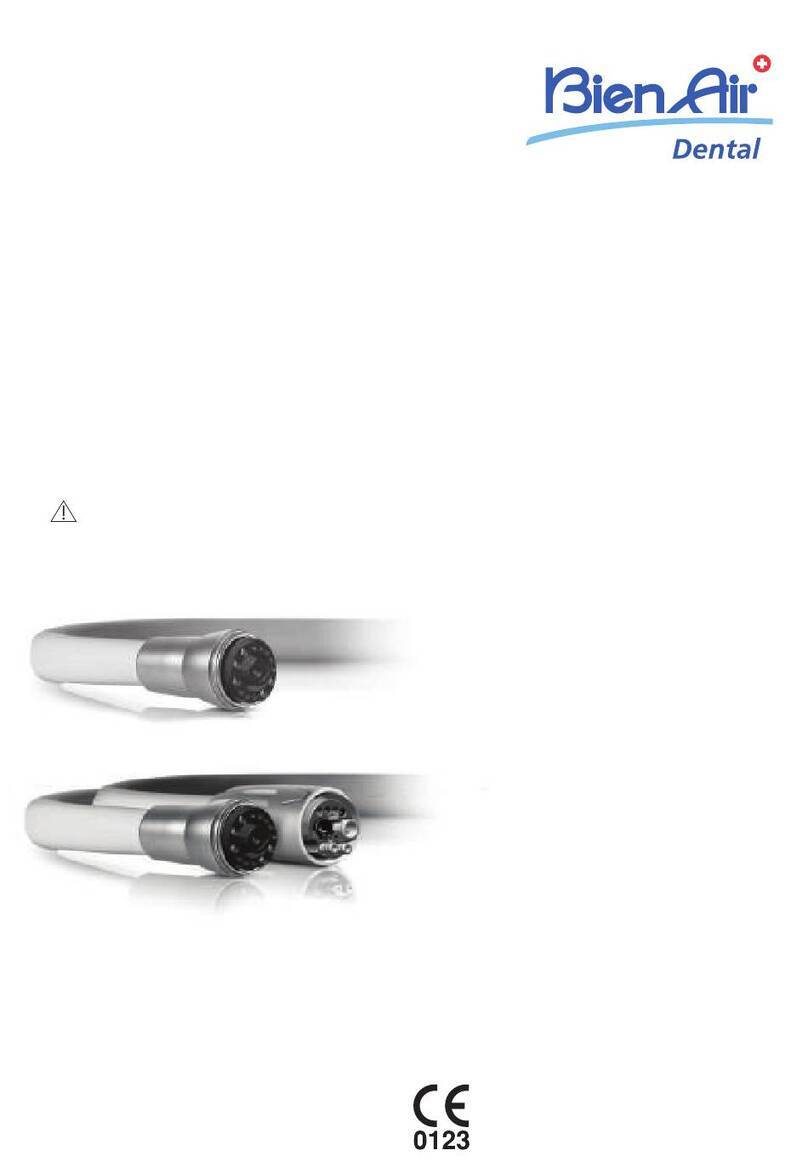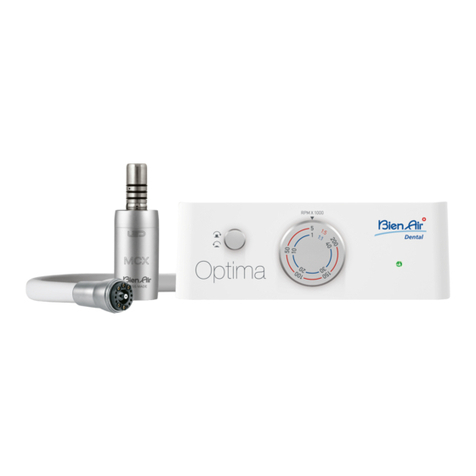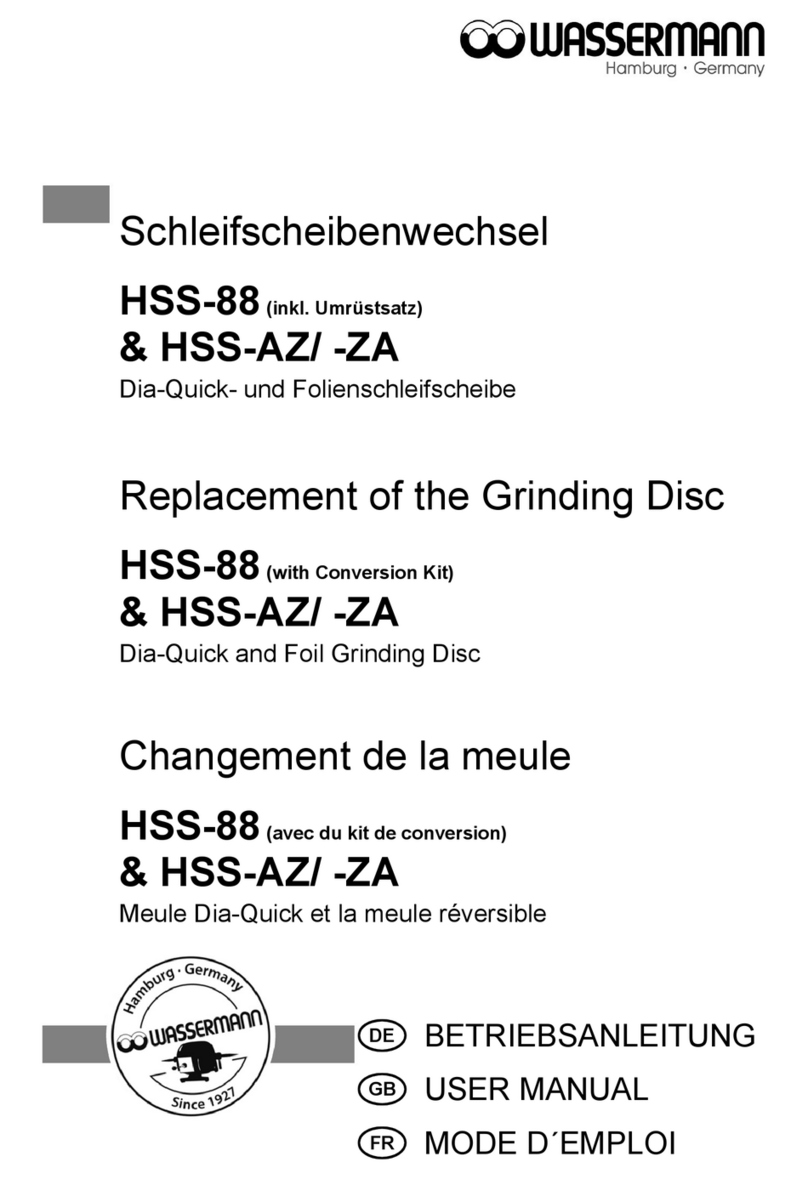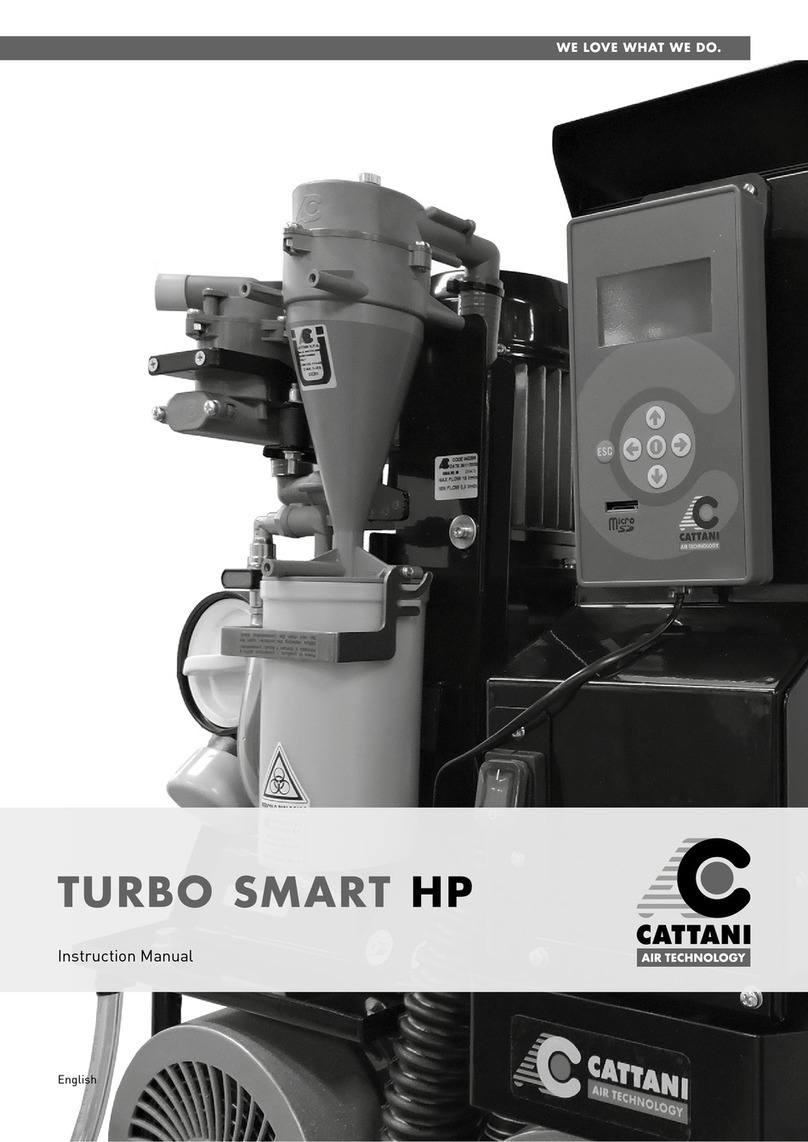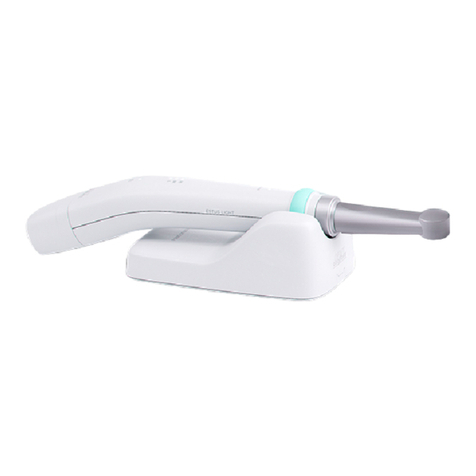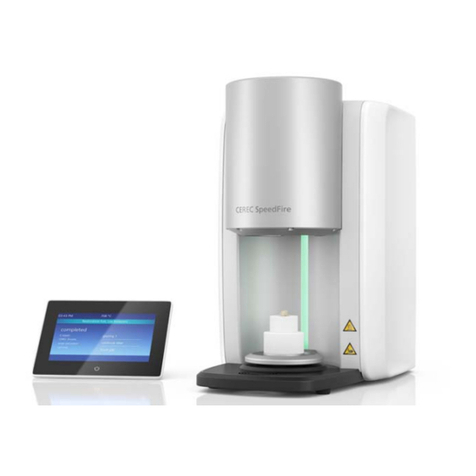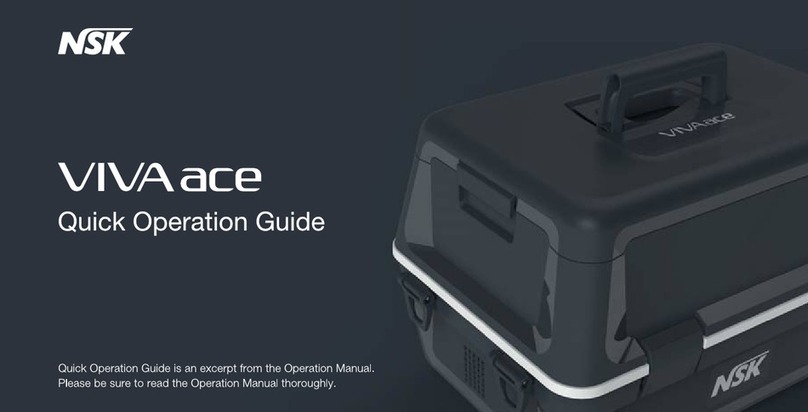Bien-Air Dental CA 1:2.5 L User manual

CA 1:2.5 L
CA 1:2.5 L MS
ENG
Instructions for use
Other languages available on
https://
dental.bienair.com/ifu
RX Only
2100439-0000/2023.06

DEVICES
CA 1:2.5 L
REF 1601163-001
CA 1:2.5 L MS
REF 1601164-001
OPTIONAL ACCESSORIES (REF)
IRRIGATION LINE (10/pkg)
REF 1500984-010
MAINT SPRAYNET
(BOX of 6 CANS)
REF 1600036-006
MAINT LUBRIFLUID
(BOX of 6 CANS)
REF 1600064-006
MAINT AQUA CARE
(BOX of 6 CANS)
REF 1600617-006
2100439-0000 /2023.06
CA 1:2.5 L - CA 1 :2.5 L MS ●© Bien-Air Dental SA

2
Table of content
1.Symbol ................................................................................................................................ 3
1.1 Description of symbols used. ............................................................................................................ 3
2.Identification & Intended Use .............................................................................................. 4
2.1
Identification
.................................................................................................................................... 4
2.2
Intended Use
.................................................................................................................................... 4
2.3
Intended patient population
............................................................................................................. 4
2.4
Intended user
................................................................................................................................... 4
2.5 Use Environment .............................................................................................................................. 4
2.6
Intended Medical Conditions
........................................................................................................... 4
2.7
Patient
contra-indication and side effects.......................................................................................... 5
2.8
In case of accident
........................................................................................................................... 5
3.User and Patient Safety: Warnings & Precautions for use .................................................. 6
4.
Description
.......................................................................................................................... 8
4.1
Overview
.......................................................................................................................................... 8
4.2 Technical Data .................................................................................................................................. 9
4.3
Classification
.................................................................................................................................. 11
4.4
Performances
................................................................................................................................ 11
4.5
Operating conditions
..................................................................................................................... 11
5.
Operation
.......................................................................................................................... 12
5.1
Pictograms used
............................................................................................................................ 12
5.2
Changing the bur
............................................................................................................................ 12
6.Maintenance and Servicing .............................................................................................. 13
6.1
Maintenance - General information
............................................................................................... 13
6.2
Cleaning
......................................................................................................................................... 14
6.3 Disinfection ..................................................................................................................................... 15
6.3.1
Manual cleaning and disinfection
.............................................................................................. 15
6.3.2
Automatic disinfection
................................................................................................................ 15
6.4
Lubrication
..................................................................................................................................... 17
6.5
Sterilization
................................................................................................................................... 17
6.6 Packing and storage ....................................................................................................................... 18
6.7
Servicing
........................................................................................................................................ 19
7.Transport and Disposal .................................................................................................... 19
7.1
Transport
....................................................................................................................................... 19
7.2
Disposal
......................................................................................................................................... 19
8.
General Information
.......................................................................................................... 20
8.1
Terms of guarantee
........................................................................................................................ 20
8.2
References
..................................................................................................................................... 20

3
1.Symbol
1.1 Description of symbols used.
Symbol
Description
Symbol
Description
CE Marking with number of the
notified body.
Manufacturer.
WARNING! hazard that could result
in serious injury or damage to the
device if the safety instructions are
not correctly followed.
Consult instructions for use or
consult electronic instructions for
use.
CAUTION! hazard that could result
in light or moderate injury or
damage to the device if the safety
instructions are not correctly
followed.
Data Matrix code for product
information including UDI (Unique
Device Identification).
Temperature limitation.
Humidity limitation.
Atmospheric pressure limitation.
Medical device.
Keep away from rain.
Serial number.
Wear rubber gloves.
Catalogue number.
Warning: in accordance with federal
law (USA), this device is only
avai
lable for sale upon
recommendation by an accredited
practitioner.
Authorized EC Representative in
the European Community.
General symbol for
recovery/recyclable.
Sterilization up to the specified
temperature.
Can be processed in an automated
washer/disinfector for thermal
disinfection.
Lamp, lighting, illumination.

4
2.Identification & Intended Use
2.1
Identification
Medical devices manufactured by Bien-Air Dental SA.
Type
Surgical contra-angles handpiece (CA), push-button bur locking, with light, speed
increasing ratio and external irrigation.
Description
Bien-Air Dental contra-angles and straight handpieces (PM) are designed to transmit
and apply the mechanical energy produced by an electric micromotor.
Contra-angle
Light
E-type connection
(ISO 3964)
Ratio
With light
Without light
Standard
Short
CA 1:2.5 L
CA 1:2.5 L MS
2.2
Intended Use
Devices intended for use in oral surgery and maxillofacial surgery.
2.3
Intended patient population
The intended patient population for the contra-angles includes any person visiting a
medical practitioner’s office to receive treatment in line with the intended medical
condition. There is no restriction concerning subject age, race, or culture. The
intended user is responsible to select the adequate device for the patient according to
the specific clinical application.
2.4
Intended user
Device intended for professional use only. Used by oral and maxillofacial surgeons.
2.5 Use Environment
Professional healthcare facility environment.
2.6
Intended Medical Conditions
•Oral surgery treatments include impacted teeth extraction, wisdom teeth ex-
traction, non salvageable decayed teeth extraction, guided and not-guided bone
regeneration, apicoectomy, osteotomy, sequestrectomy and hemisection.
•Maxillofacial surgery includes procedures such as orthognathic surgery,
genioplasty and rhinoplasty.

5
2.7
Patient
contra-indication and side effects
No specific patient contra indication, side effects nor warnings exist for the contra-
angle devices when the devices are used as intended.
2.8
In case of accident
If an accident occurs, the device must not be used until repairs have been completed
by a qualified, authorized and trained technician in a repair center.
If any serious incident occurs in relation to the device, report it to a competent
authority of your country, as well as the manufacturer through your regional distributor.
Observe relevant national regulations for detailed procedures.
WARNING
Any use other than that for which this device is intended is prohibited and may prove
dangerous.

6
3.User and Patient Safety: Warnings & Precautions for use
WARNING
The device must be used by qualified dental professionals in compliance with the
current legal provisions concerning occupational safety, health and accident
prevention measures, and these instructions for use. In accordance with such
requirements, the operators:
•Must only use devices that are in perfect working order; in the event of irregular
functioning, coolant failure, excessive vibration, abnormal heating, unusual noise
or other signs that may indicate malfunction of the device, the work must be
stopped immediately; in this case, contact a repair center that is approved by
Bien-Air Dental SA and have the service personnel carry out repair work.
•Must ensure that the device is used only for the purpose for which it is intended,
must protect themselves, their patients and third parties from any danger.
•Any modification of the medical device is strictly forbidden.
To prevent any risk of infection, the warnings below must be observed:
WARNING
•The device is supplied not sterile. To avoid any infection, respect the cleaning,
disinfection, sterilization and overall maintenance procedure detailed in section 6.
Sterilization before first use is mandatory.
•Medical personnel using or performing maintenance on medical devices that are
contaminated or potentially contaminated must comply with universal precautions, in
particular the wearing of personal protective equipment (gloves, goggles, etc.). Pointed
and sharp instruments should be handled with great care.
•When disposing of the device, the user must return it sterilized to their dealer or contact
an authorized body for the treatment and recovery of this type of equipment.
To prevent any risk of injury the warning below must be observed:
WARNING
•Never insert or remove a device while the micromotor is rotating.
•Never partially insert a bur to increase its active length.
•Do not touch the bur while the device is rotating.
•Each time a bur is inserted, check that the bur is fully inserted to the stop. Always check
that the bur is locked by gently pushing and pulling the bur.
•Never use a bur if the tip is not compliant with specifications.
•Always ensure that the coolant supply is sufficient and adequate according to
specifications.
•Soft tissues (tongue, cheeks, lips, etc.) must be protected by moving them away using
a retractor or dental mirror to avoid the risk of burns if the push-button is inadvertently
pressed while the instrument is running.

7
To prevent any risk of device overheating, the cautions below must be observed:
CAUTION
•The device must not be started without a bur inserted into the chuck.
•To avoid overheating of the push-button, it should not be pressed inadvertently while
the instrument is rotating.
To prevent any risk of device failure or malfunction the caution below must be
observed:
CAUTION
•Before performing any clinical application, always test your device without any load to
ensure it is in perfect order.
•Only use original Bien-Air Dental SA devices and accessories or those recommended
by Bien-Air Dental SA.
•Respect the cleaning, sterilization and maintenance procedure detailed in section 6.
•These medical devices are intended to be used at a maximum height of 1.5 m, to avoid
damage in the event of a fall.
•Never insert or remove a device while the micromotor is rotating.

8
FIG 1
4.
Description
4.1
Overview
FIG 1
(1)
Push-button with a bur-locking system
(2)
Transmission ratio
(3)
Bur (not supplied)
(4)
Light output
(5)
Micromotor connection
(6)
External irrigation connection
Note:
The technical specifications, illustrations and dimensions contained in
these instructions are given merely as an indication. They may not give rise to
any claim.
The original language of these instructions for use is English.
For any further information, please contact Bien-Air Dental SA at the address
given on the back cover.
3
1
2
5
4
6

9
4.2 Technical Data
Contra-angle
Information
Motor coupling compatibility
Coupling according to ISO 3964
- Microseries (MS) CA & PM can be coupled to short and
extra short Motor couplings
- Standard CA & PM can be coupled to all coupling types
Lighting
“L” letter means light
CA & PM without L letter means no lighting
Transmission ratio according to ISO
14457
Speed increasing ratio 1:2.5 (red color)
Motor max speed
40’000 rpm
Bur max speed
100’000 rpm
Irrigation type
External irrigation
Maximum Irrigation flow*
110 ml/min
*Using Bien-Air Chiropro device at maximum irrigation level (5 drops)
WARNING
•Always ensure that the coolant supply is sufficient and adequate according to
specifications.
•T
he minimum irrigation quantity at the entrance of the CA must be set to at least
60mL/min (corresponding to 2 drops level if used in association with Chiropro
devices).

10
FIG 2
Compatibility of the chuck mechanism
Shaft diameter 2.35 mm, type 1 as per ISO 1797, recommended length 26mm*
code 4/5 as per ISO 6360-1 (Maximum working diameter 2.3 mm)
FIG 2
.
(*) When using longer rotary instruments (e.g. 34 mm surgical burs) the user
must ensure, by selecting the correct operating conditions, that there is no
danger to the user, patient or third parties. Intensive use of burs with code 6 can
accelerate the wear of the device.
Bur compatibility
Shaft diameter ISO 1797
2.35 mm (Type 1)
Shaft length ISO 1797
≥
12 mm
Bur max. working diameter
≤2.3 mm
Bur recommended length ISO 6360-1
≤
26 mm (code 4-5)
Bur max. length ISO 6360-1
≤
34 mm (code 4-5-6)
WARNING
•Never use a tool if the tip is not compliant with specifications.
•Follow the guidelines for use, according to bur manufacturer’s instructions.
Shaft Diameter
Length
Shaft
Length

11
4.3
Classification
Class IIa in accordance with European Medical Regulation (EU) 2017/745.
4.4
Performances
Performances
CA 1:2.5 L & CA 1:2.5 L MS
Speed transmission ratio
1:2.5
4.5
Operating conditions
Operating conditions
Temperature range:
[+10°C; +35°C]
[+50°F; +95°F]
Relative humidity range:
[30%; 80%]
Air pressure range: Barometric pressure
range:
[700 hPa; 1060 hPa]
[490 mmHg; 795 mmHg]
Keep away from rain

12
FIG 3
5.
Operation
5.1
Pictograms used
5.2
Changing the bur
Clamping system operation
1.
Press the push-button to disengage the clamping system. While keeping the
push-button pressed, pull out the
bur (FIG 3 step 1). Release the
push-button
to engage the clamping
system.
2.
Press the push-button to disengage the clamping system. While keeping the
push-button pressed, insert the new bur all the way to the stop (
FIG 3
step 2).
Release the push-button to engage the clamping system.
Clamping system inspection
Verify that the bur can be turned around smoothly and check that the bur
remains in position when traction is applied (
FIG 3
step 3).
WARNING
•Never insert or remove a bur while the
device is rotating.
•Never partially insert a bur to increase its
active length.
•Do not touch the bur while the device is
rotating.
•Each time a bur is inserted, check that
the bur is fully inserted to the stop.
Always check that the bur is locked by
gently pushing and pulling the bur.
CAUTION
•
If the bur cannot be easily and
fully inserted into the chuck,
contact your usual supplier or
Bien-Air Dental SA for repair.
•
Test your device without any
load to ensure the bur rotates
stably and its dynamic
eccentricity is acceptable for
the planned clinical procedure.
Symbol
Description
Symbol
Description
Movement in the direction
indicated.
Movement to the stop in the
direction indicated.
Back and forth movement.

13
6. Maintenance and Servicing
6.1
Maintenance - General information
WARNING
•
The device is supplied "nonsterile". Clean, dry, lubricate and sterilize the device
prior to first use.
•
Follow your national directives, standards and guidelines for cleaning and
sterilization recommendations.
•
Rest the device on a cleanable support to avoid risks of infection for yourself, the
patient or third parties.
6.1.1
Precautions for maintenance
•
Within a maximum of 30 minutes after each treatment, clean and disinfect
the instrument. Observing this procedure eliminates any blood, saliva or
residues and prevents the transmission system from being blocked.
•
Only use original Bien-Air Dental SA maintenance products and parts or
those recommended by Bien-Air Dental SA. For suitable maintenance
products refer to section
6.1.2 Suitable maintenance products
. Using other
products or parts may cause faults during operation and/or void the
guarantee.
6.1.2 Suitable maintenance products
Preliminary cleaning:
•
Use tap water if the local tap water has pH within the range 6.5 - 8.5 and
chloride content below 100 mg/l. If the local tap water does not meet these
requirements, use demineralized (deionized) water instead.
•
Aquacare.
Manual cleaning:
•
Spraynet®.
Manual disinfection:
•
Alkaline detergent, or detergent-disinfectant (pH 8-11) recommended for
cleaning-disinfection of dental or surgical instruments. Disinfectant products
composed either of didecyldimethylammonium chloride, quaternary ammonium
carbonate or neutral enzymatic product. (e.g. Neodisher® mediclean) are also
allowable.
Automatic cleaning-disinfection:
•
Use an alkaline or enzymatic product recommended for cleaning in a washer-
disinfector for dental or surgical instruments (pH 8-11).
Lubrification
•
Lubrifluid®.

14
FIG 4
FIG 5
6.2
Cleaning
•
Do not use saline solution to keep
the device moist until it can be
cleaned.
•Clean using manual cleaning or
au
tomated washer/disinfector only
(do not use ultrasonic cleaner).
•
Carry out cleaning and sterilization
without a bur in the chuck
mecha
nism.
Preparation
1.
Remove the irrigation line then
dis
connect the device from the
electri
cal motor.
2.
Remove the bur (
FIG 3
step 1).
3.
If there is a large amount of
debris, clean the exterior of the
device with disinfectant wipes.
CAUTION
•
Use the Aquacare maintenance
product as soon as possible, to
remove NaCl deposits.
•
If there is a large amount of debris,
clean the exterior of the device
with disinfectant wipes. Observe
the instructions given by the
manufacturer.
Remove dirt / deposits
1.
Clean the exterior and interior
of the device under tap water at
15°C-38°C (59°F-100°F)
provided that the local tap
water has a pH within the
range of 6.5 - 8.5 and a
chloride content below 100
mg/l. If the local tap water does
not meet these requirements,
use demineralized (deionized)
water
instead. (FIG 4)
2.
After selecting the appropriate
nozzle, perform preliminary
cleaning of the device by using
the product Aquacare. Spray
the inside
(
FIG 5
), the outside
of the device and inside the
irrigation tube (
FIG 5
).

15
FIG. 7
6.3 Disinfection
6.3.1
Manual cleaning and disinfection
1.
Dip the device in a bath
containing a cleaning and
disinfectant product (e.g. an
alkaline product like neodisher
Mediclean). Follow the concen-
tration and duration
recommended by the fabricant
of the disinfection product.
2.
Brush the device with a smooth,
flexible brush (e.g. soft-bristled
toothbrush). DO NOT USE a
wire brush.
3.
Optional:
perform additional
cleaning and disinfection of the
external surfaces with non-
woven wipes impregnated with a
disinfection product (e.g.
didecyldimethylammonium
chloride).
4.
Rinse the exterior and interior of
the device under tap water at
15°C-38°C (59°F-100°F)
provided that the local tap water
has a pH within the range of 6.5 -
8.5 and a chloride content below
100 mg/l. If the local tap water
does not meet these
requirements, use demineralized
(deionized) water instead.
5.
After selecting the appropriate
nozzle, spray inside the device
with Spraynet® (FIG 6).
6.
Dry the external surfaces with
sterile non-woven compresses
(low linting textiles), preferably
impregnated with Spraynet® or
other blends of drying alcohols,
like ethanol or isopropyl alcohol
suitable for metals and
polymers.
6.3.2
Automatic disinfection
Note:
the automatic cleaning-
disinfection can replace the
previous steps 4 to 6.
Washer-disinfector
Carry out automatic cleaning-
disinfection using an approved
washer-disinfector which complies
with ISO standard
15883-1.
Detergent and washing cycle
Use cleaning products (e.g alkaline de
tergent or detergent-disinfectant pH
8-11 or neutral
enzyme
de
t
ergen
t
pH
7
-
8)
recommended for washer-
disinfector.

16
Recommended specifications for the thermo-disinfection cycle.
Phase
Parameters
Pre-cleaning
<45°C (113°F);
≥
2 minutes
Cleaning
45-55°C/113-131°F for enzymatic detergents and 45-65 °C/113-
149°F for alkaline detergents
≥
5 minutes
Neutralization
≥
2 minutes
Rinsing
Tap water,
≤
30°C (86°F),
≥
2 minutes cold water
Thermal Disinfection
Demineralized water, 90°C-95°C (194°F-203°F), 5-10 minutes
Drying
18-22 minutes
CAUTION
Never rinse the devices to cool them.
CAUTION
If an automatic washer is used instead of the washer/thermo-disinfector, respect
the previous program for the Pre-cleaning, Cleaning, Neutralization and Rinsing
phases. If the local tap water has a pH outside the range of 6.5-8.5 or if it contains
more than 100 mg/l chloride (Cl-ion), do not dry the device inside the automatic
washer but dry it manually with low linting textiles.

17
6.4
Lubrication
Verifying cleanliness
Visually inspect the device to ensure it is clean. Repeat the cleaning and disinfection
procedure if necessary.
Lubrication
Lubricate before each sterilization or at least twice a day. Only the Lubrifluid® spray
must be used.
FIG 7
1.
Place the device in a sterile, non-woven cloth to collect the excess of
lubricant.
2.
Select the appropriate nozzle.
3.
Insert the nozzle of the Lubrifluid® can in the rear of the device’s handle.
4.
Activate the spray for 1 second and clean the excess oil on the exterior with a
sterile, non-woven compress.
6.5
Sterilization
CAUTION
The quality of the sterilization is highly dependent on how clean the instrument is.
Only perfectly clean instruments may be sterilized.
•
To improve the effectiveness of the sterilization, make sure the contra-
angle is completely dry before and after the sterilization.
•
Do not use a sterilization procedure other than the one described below.
•Only use dynamic air removal cycles:
pre-vacuum or steam flush pressure
pulse (SFPP) cycles.
•
If the sterilization is required by national directives, use only dynamic
sterilizers: do not use a steam sterilizer with a gravity displacement
system.
•
As with all instruments, following each sterilization cycle, including
drying, remove the device to avoid an excessive exposure to heat which
can result in corrosion.
•
The bur must be disassembled from the device prior to sterilization.
FIG. 7

18
Procedure
1.
Pack the device in a packaging approved for steam sterilization.
2.
Sterilize using steam, following dynamic air removal cycle (ANSI/AAMI ST79,
Section 2.19), i.e. air removal via forced evacuation (ISO 17665- 1, ISO/TS 17665-2)
at 135°C (275°F), for 3 minutes or 132°C (269.6°F) for 4 minutes. In jurisdictions
where sterilization for prions is required, sterilize at 135°C (275°F) for 18 minutes.
The device can be used for more than 1,000 sterilization cycles.
The recommended parameters for the sterilization cycle are:
•
The maximum temperature in the autoclave chamber does not exceed 137°C
(278°F), i.e. the nominal temperature of the autoclave is set between 132°C -
135.5°C (269.6°F –275.9°F) taking into account the uncertainty of the
sterilizer as regards temperature.
•
The maximum duration of the interval at the maximum temperature of 137°C
(278°F) is in accordance with national requirements for moist heat sterilization
and does not exceed 30 minutes.
•
The absolute pressure in the chamber of the sterilizer is comprised in the
interval between 0.07 bar to 3.17 bar (1 PSIA to 46 PSIA/28 Hg to 31 PSIG).
•
The rate of change of temperature does not exceed 15°C/min (27°F/min) for
increasing temperature and -35°C/min (-63°F/min) for decreasing
temperature.
•
The rate of change of pressure does not exceed 0.45 bar/min (6.6 psia/min) for
increasing pressure and -1.7 bar/min (-25 psia/min) for decreasing pressure.
•
No chemical or physical reagents are added to the boiler feedwater.
6.6 Packing and storage
Storage Conditions
Temperature range:
[0°C; +40°C]
[+32°F; +104°F]
Relative humidity range:
[10%; 80%]
Air pressure range: Barometric pressure
range:
[650 hPa; 1060 hPa]
[490 mmHg; 795 mmHg]
Keep away from rain
The device must be stored inside the sterilization pouch in a dry and dust free
environment. The temperature must not exceed 55°C (131°F). If the device will not be
used for 7 days or more after the sterilization, extract the device from the
sterilization pouch and store it in the original package. If the device is not stored in a
sterilization pouch or if the pouch is no longer sterile, clean, lubricate and sterilize
the
device before using it.

19
CAUTION
If the medical device has been stored
refrigerated, allow it to warm up to room
temperature prior to removal from its
packaging and use.
WARNING
Comply with the expiration date of the
sterilization pouch which depends on the
storage conditions and type of packaging.
6.7
Servicing
Bien-Air Dental SA recommends a regular
service for the handpiece after 2000
processing cycles or 2 years. Never
dismantle the device. For all servicing or
repair operations, you are advised to
contact your usual supplier or Bien-Air
Dental SA directly.
7.Transport and Disposal
7.1
Transport
Transport Conditions
Temperature range:
[-20°C; +50°C]
[-4°F; -122°F]
Relative humidity range:
[5%; 80%]
Air pressure range: Barometric pressure
range:
[650 hPa; 1060 hPa]
[490 mmHg; 795 mmHg]
Keep away from rain
7.2
Disposal
The disposal and/or recycling of materials
must be performed in accordance with the
local, national or international regulations.
All contra-angles and handpieces must
be recycled. In order to avoid any risk of
contamination, the user must return the
device sterilized to their dealer or
contact an authorized body for the
treatment and recovery of this type of
equipment.
This manual suits for next models
3
Table of contents
Other Bien-Air Dental Dental Equipment manuals
Popular Dental Equipment manuals by other brands
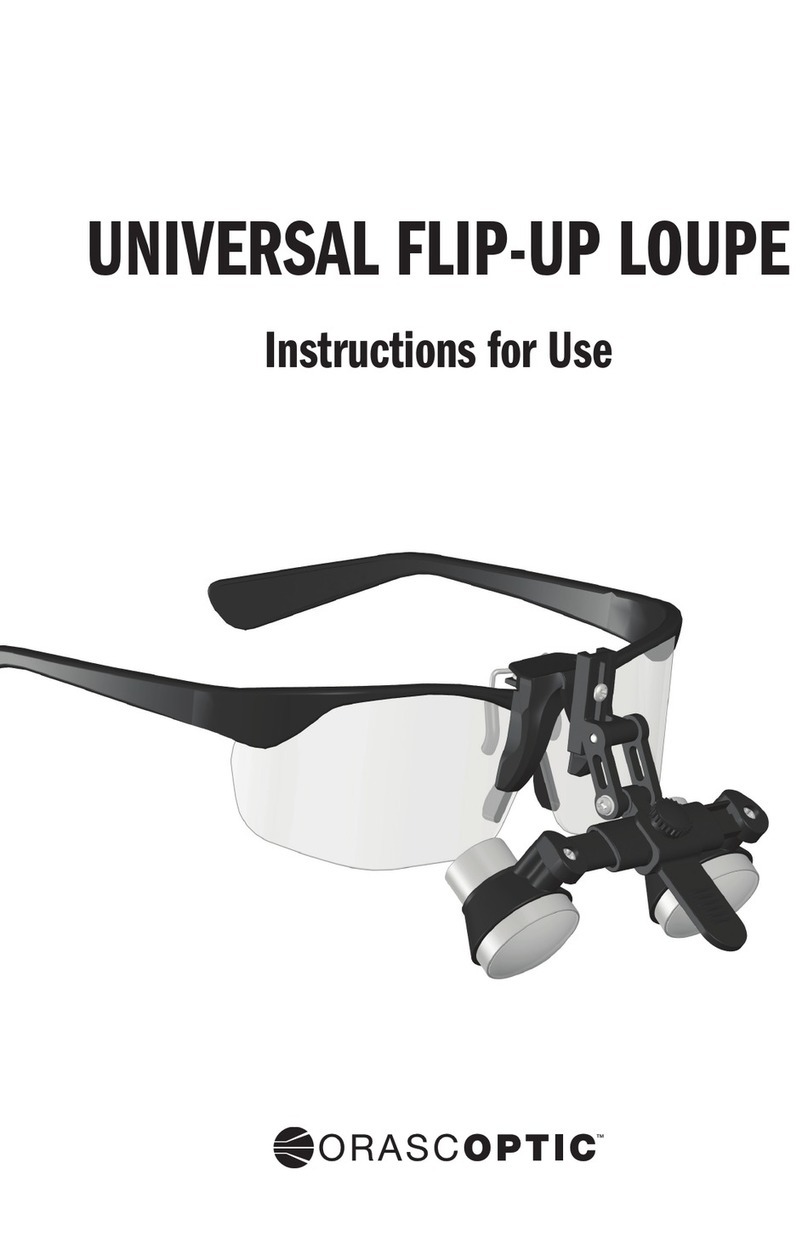
Orascoptic
Orascoptic UNIVERSAL FLIP-UP LOUPE Instructions for use

Ultradent Products
Ultradent Products GEMINIEVO 810 DIODE LASE user manual

KaVo
KaVo ESTETICA E50 Life Instructions for use
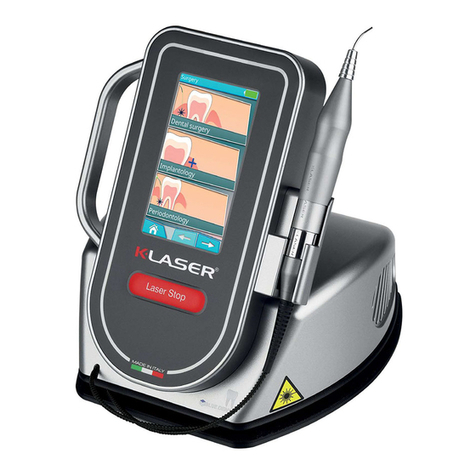
K-LASER
K-LASER Blue Dental Operating instruction
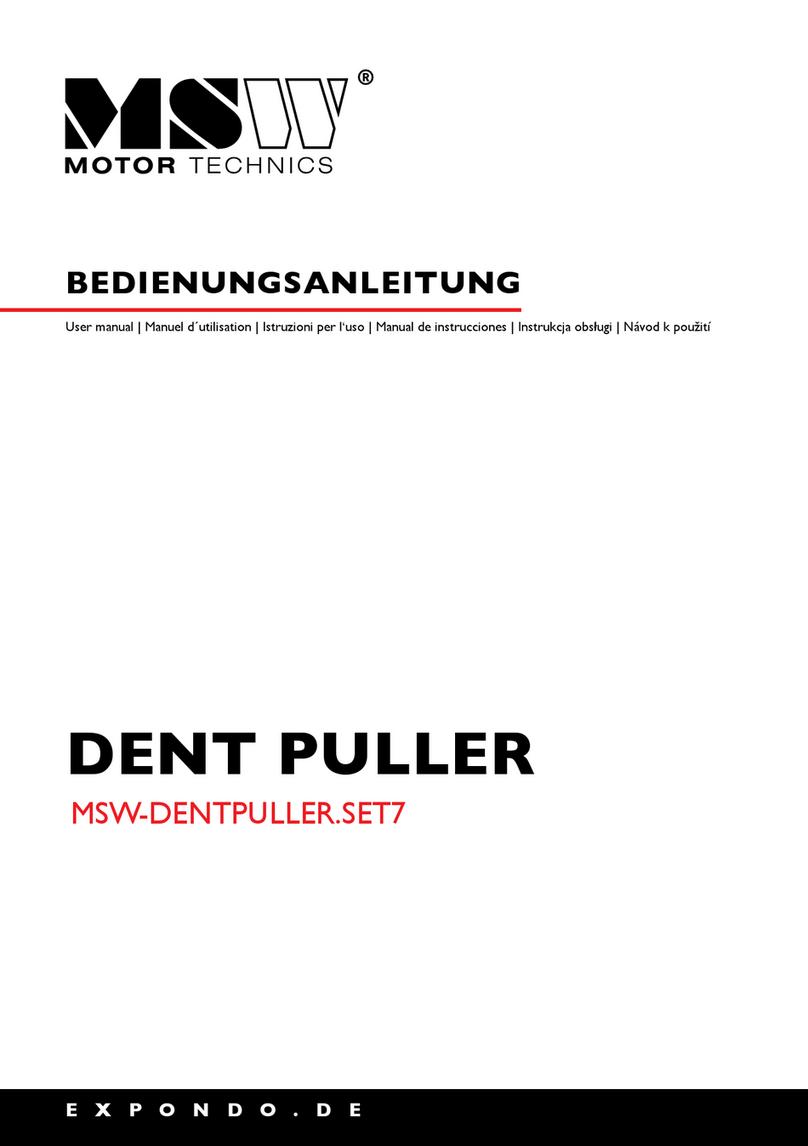
MSW
MSW MSW-DENTPULLER.SET7 user manual
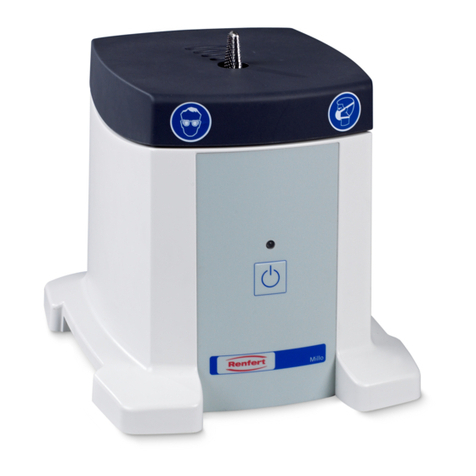
Renfert
Renfert Millo instruction manual

NSK
NSK Ti-Max X95L Part replacement instructions
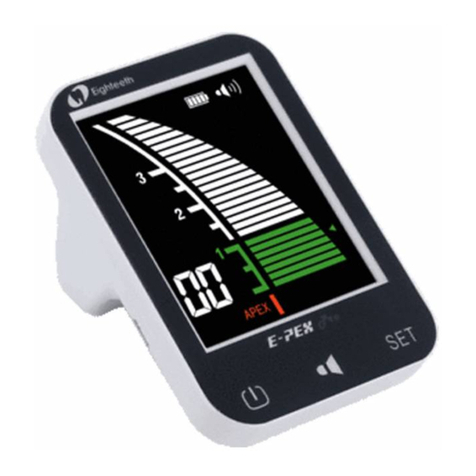
Eighteeth
Eighteeth E-CONNECT user manual
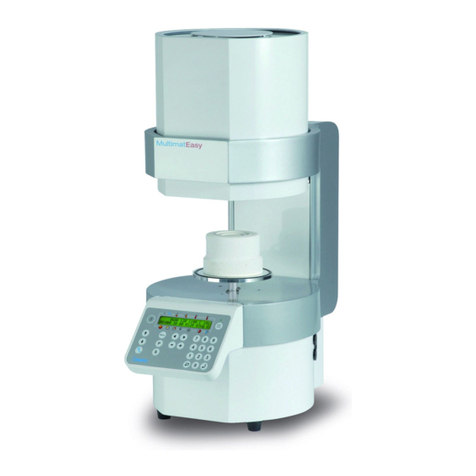
DENTSPLY
DENTSPLY Multimat Easy Instructions for use
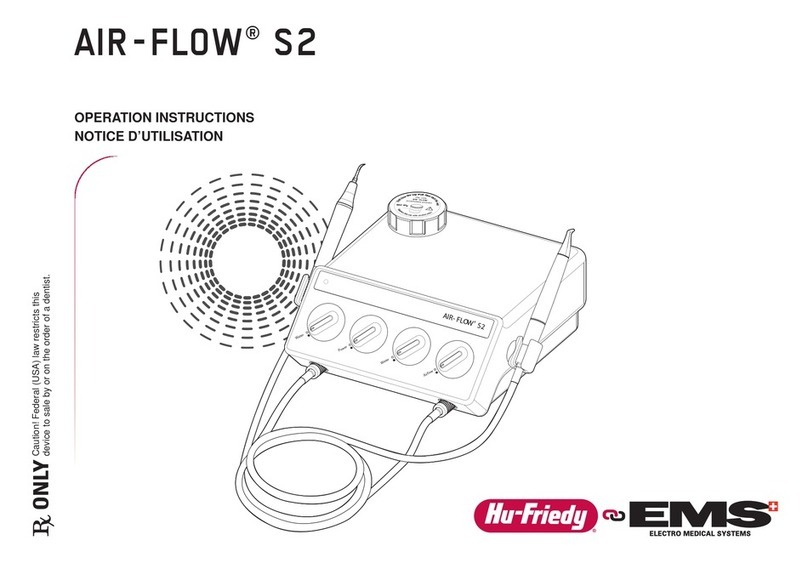
Hu-Friedy
Hu-Friedy EMS Air-Flow S2 Operation instructions
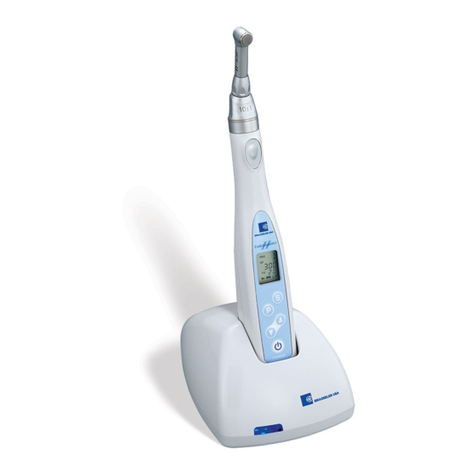
BRASSELER USA
BRASSELER USA EndoSequence II Operation manual

DENTSPLY Tulsa Dental
DENTSPLY Tulsa Dental Calamus Flow Directions for use
